Apple iPad Pro 13-inch M4 review: a true MacBook replacement
With a powerful new M4 chip, gorgeous screen and Magic Keyboard, this could be your new laptop

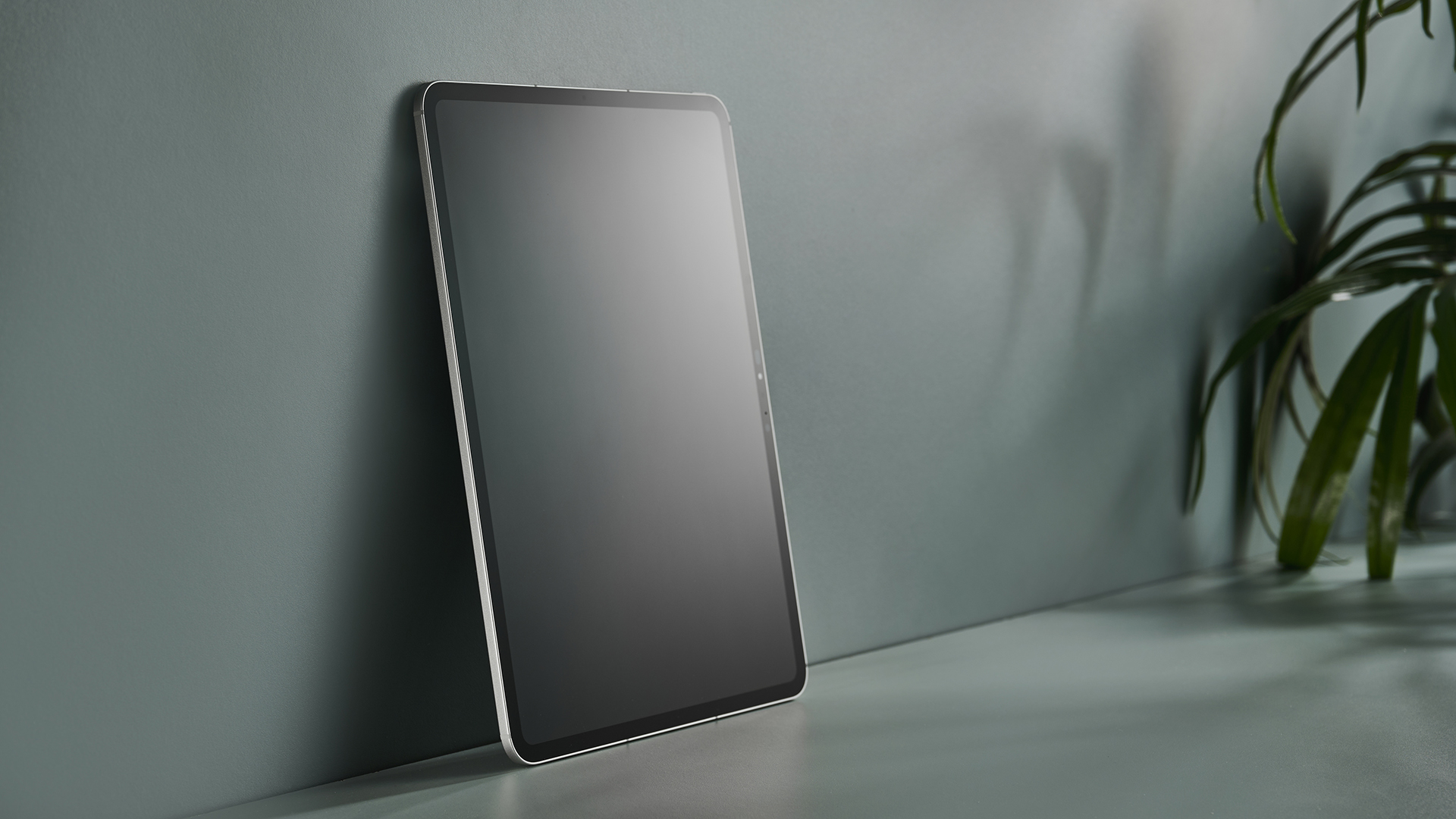
The iPad Pro has raised the bar once again, with blistering performance from the M4 chip and a simply gorgeous OLED display. Plus, it’s even thinner and lighter than before, making it super portable and easy to hold. This is the king of tablets and a potential laptop replacement.
-
+
Incredibly powerful M4 chip
-
+
Gorgeous OLED display
-
+
Thin and light
-
-
iPadOS is holding it back
-
-
Probably more power than you need
-
-
Need to choose more storage for the best RAM and CPU
Why you can trust T3

To call the iPad Pro a tablet seems diminutive. It’s like calling the Star Wars films a space drama – it’s true but it’s so much more. The iPad revolutionised the tablet market when it launched in 2010. So much so that it’s rare for even Android users to look to any other option.
While the iPad Air introduced a thinner and lighter device, the Pro delivered a massive step up in performance. This had laptop-level CPU and GPUs, in the form of Apple’s own M-series silicon chips and the quality of the screens went beyond that of any current MacBook.
This latest model continues to push the boundaries of what any tablet – let alone an iPad – can do. It introduces a number of firsts across the entire Apple range, from the screen technology to the first M4 chip.
Its processing can cope with the most demanding audio and video tasks that would otherwise require a high-end laptop. At the same time, it provides the creative freedom to use a stylus (Apple Pencil) or touch to produce works of art in their own right.
The only potential catch is that this highly capable device costs close to a full laptop of similar spec. Choosing between the two may come down to personal need, with the iPad Pro offering distinct advantages in weight and screen – particularly thanks to touch and Pencil. It’s the operating system – or OS – that is potentially its biggest limitation.
I’ve spent a week using the iPad Pro, for everything from painting and song creation to watching films, and even writing this review. I have to admit I love it. It won’t be for everyone but is it the best tablet Apple has ever produced? Without doubt.
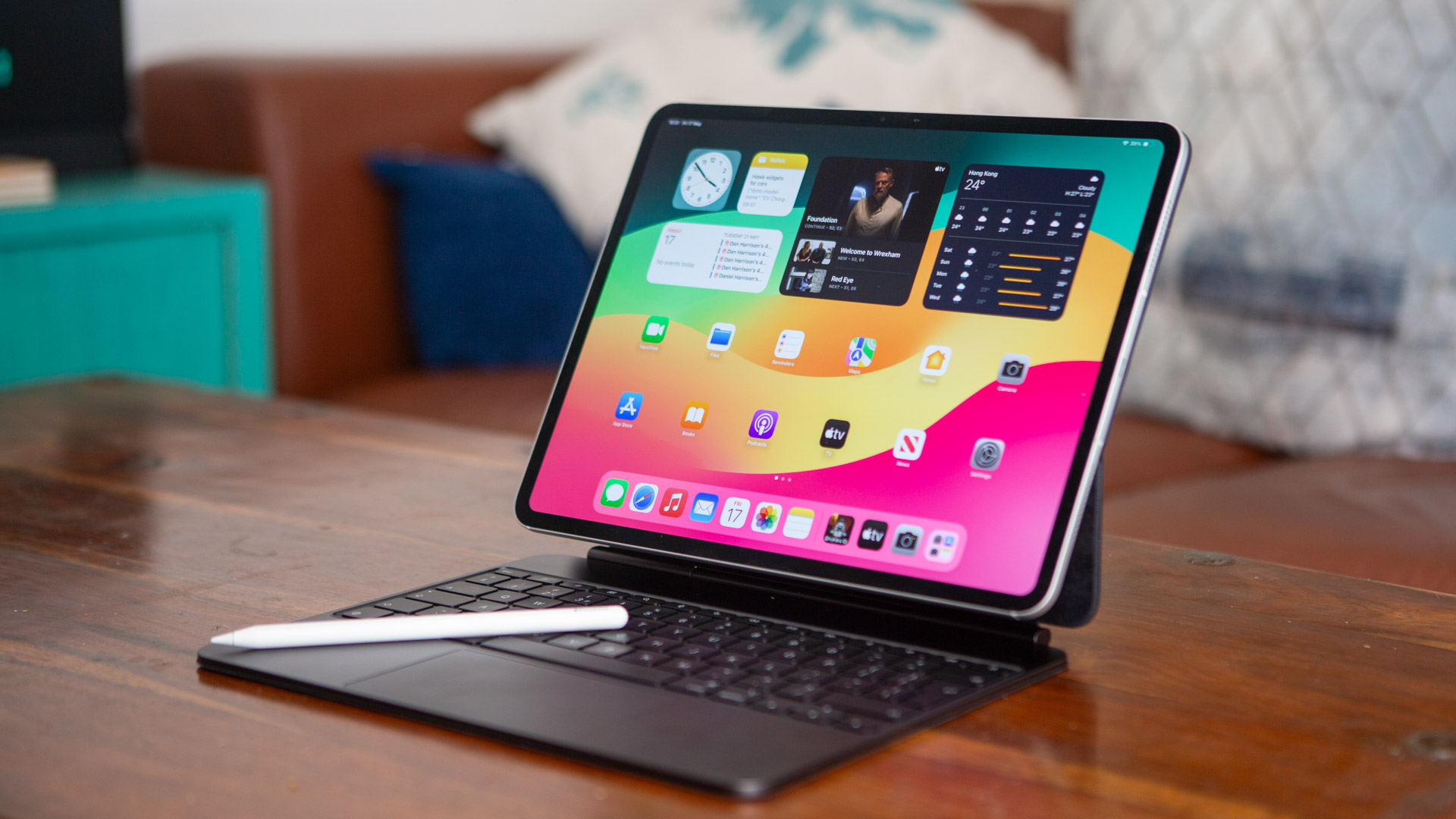
How much is the iPad Pro M4?
When it comes to pricing, the iPad now spans a huge range of pricing from 350 to thousands of dollars or pounds. Unsurprisingly, the iPad Pro sits at the top of that range, with a starting price of £999 / $999 / AU$1699 for the 11-inch model. If you want the larger 13-inch model, you are starting from £1299 / $1299 / AU$2199, and for the largest 2TB storage, Nano-textured screen and Cellular connectivity you are looking at up to £2,599 / $2599 / AU$4479.
Both the 11-inch and the 13-inch models are available with 256GB, 512GB, 1TB and 2TB storage options, in a choice of silver or black finishes, and with either WiFi or WiFi and Cellular connection. Interestingly, the M4 chips are slightly different on the 1TB and 2TB models, with an extra performance core in the CPU and more RAM.
On top of the iPad itself, you’re going to want the new Magic Keyboard, which is another £299 / $349 /AU$579 and the new Apple Pencil Pro, which is £129 / $129 / AU$219. That means the entire package is going to cost you between 1,700 and 3,000 pounds or dollars.
Now, bear in mind that the MacBook Pro M3 models start from £1700 / $1599 /AU$2699, and don’t offer touchscreen. So while it might seem a lot for a tablet, it’s potentially better value than a MacBook, particularly if you want to sketch on it.
The model I tested was the 13-inch iPad Pro with 1TB storage and WiFi+Cellular, priced at £2099 / $2099 / AU$3599.
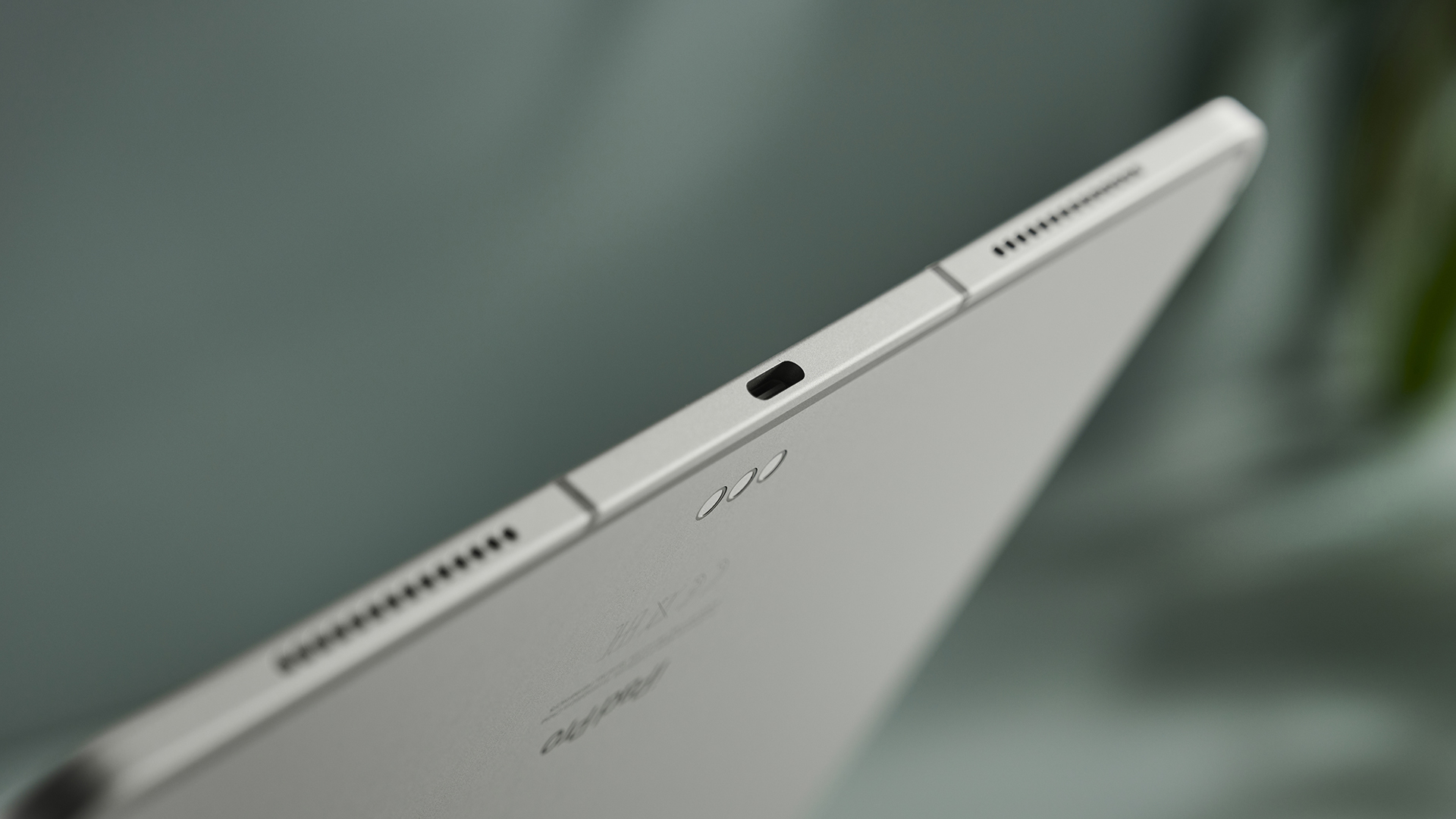
What's new on the iPad Pro M4?
At first glance, the iPad Pro looks very similar to the older model. While it is fractionally taller and wider – presumably to accommodate that 0.1-inch larger screen – it is considerably thinner and lighter, which is really noticeable in the hand. The 11-inch model is now 5.3mm thick and weighs 446g (0.98 lbs), the 13-inch is just 5.1mm and 582g (1.28 lbs), which is 1.3mm thinner than the previous and 102g lighter.
The front-facing camera now sits on the long side of the device rather than the top, which is more suited to video calls in landscape or horizontal position. It also makes Face ID easier to use in this position. This iPad more than ever is designed to be used on its side, whether with a Magic Keyboard, a Smart Folio or just being held.
Power is once again via a USB-C connection on the bottom of the device, which also supports USB 4 and Thunderbolt. There is no longer the option for a nanoSIM in cellular models, so it requires an eSIM for data connection.
There are four speakers, placed top and bottom close to the corners, to deliver that immersive sound – though Spatial Audio is only available with compatible AirPods. There’s also one fewer microphone – now four rather than five.
As the HomePod did something similar, this is presumably due to improved efficiency. The back of the iPad Pro is noticeably different due to the new camera bump, which has just a single camera, but more on this later.
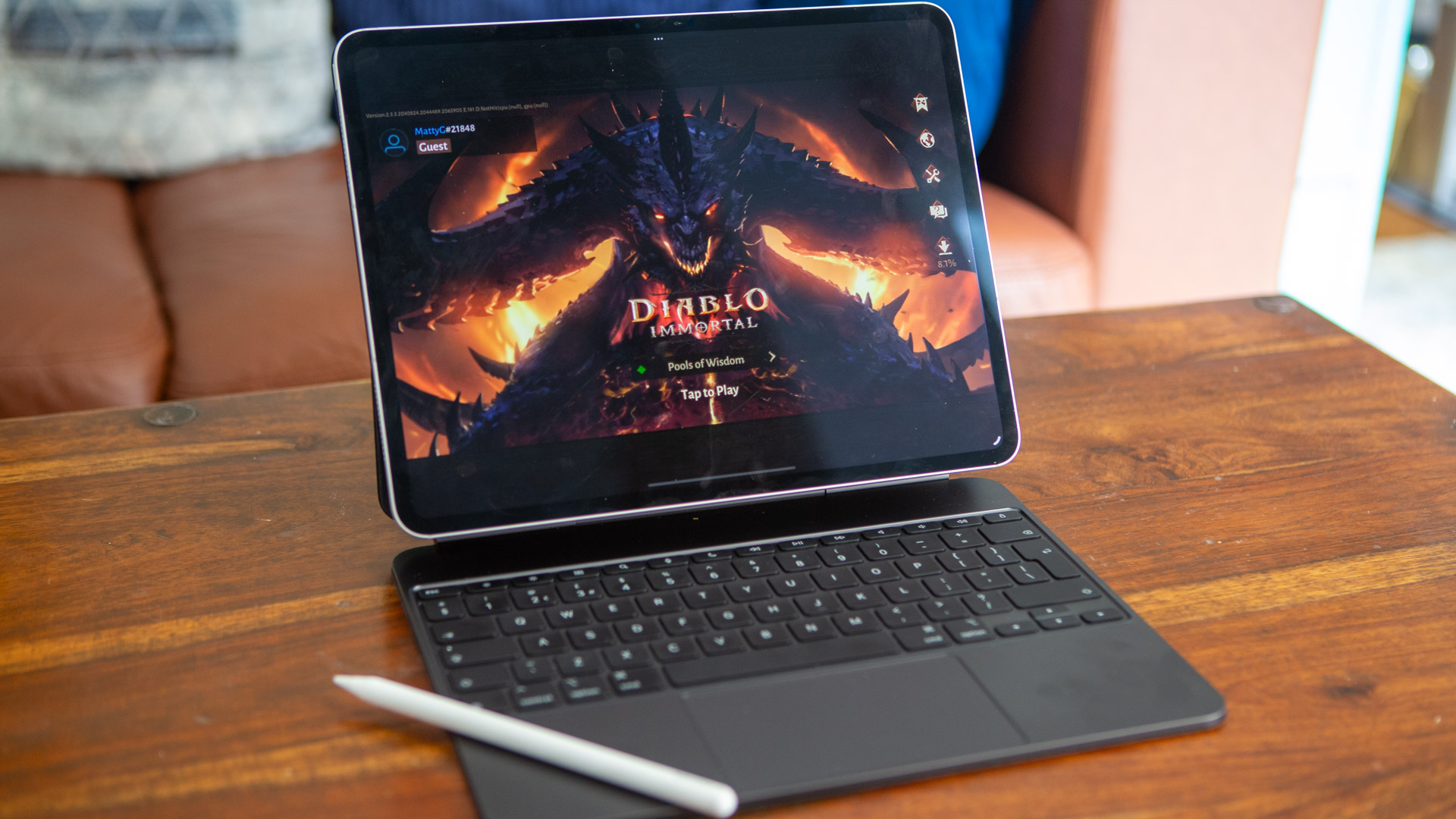
iPad Pro display
Aside from that M4 chip, the display is the most interesting part of the new iPad Pro. Rather than the mini-LED backlit display of the old model, it now features a tandem OLED display, known as the Ultra Retina XDR display. It is called a tandem OLED display as it has two OLED displays placed over the top of one another. This allows the display to be much brighter while only requiring a small power consumption from each diode.
In terms of numbers, the iPad Pro delivers 1,000 nits of full-screen brightness in all situations and 1,600 nits of peak HDR brightness. While the former model could match this in extreme dynamic range, for standard range it could only produce 600 nits.
The result is truly stunning. While the former mini-LED was impressive in terms of clarity, the sheer brightness and depth of the OLED display take it even further. The fractionally larger 13-inch screen has a higher resolution than the former 12.9-inch iPad Pro, giving it a 2752x2064 resolution while keeping the same 264 pixels per inch.
There’s also an option on the 1TB and 2TB models for a nano-texture glass. This is designed to massively reduce glare and gives it a matte appearance. It does add £100 / $100 (AU$200) to the price, but especially for outdoor and colour-sensitive editing, it makes a big difference.
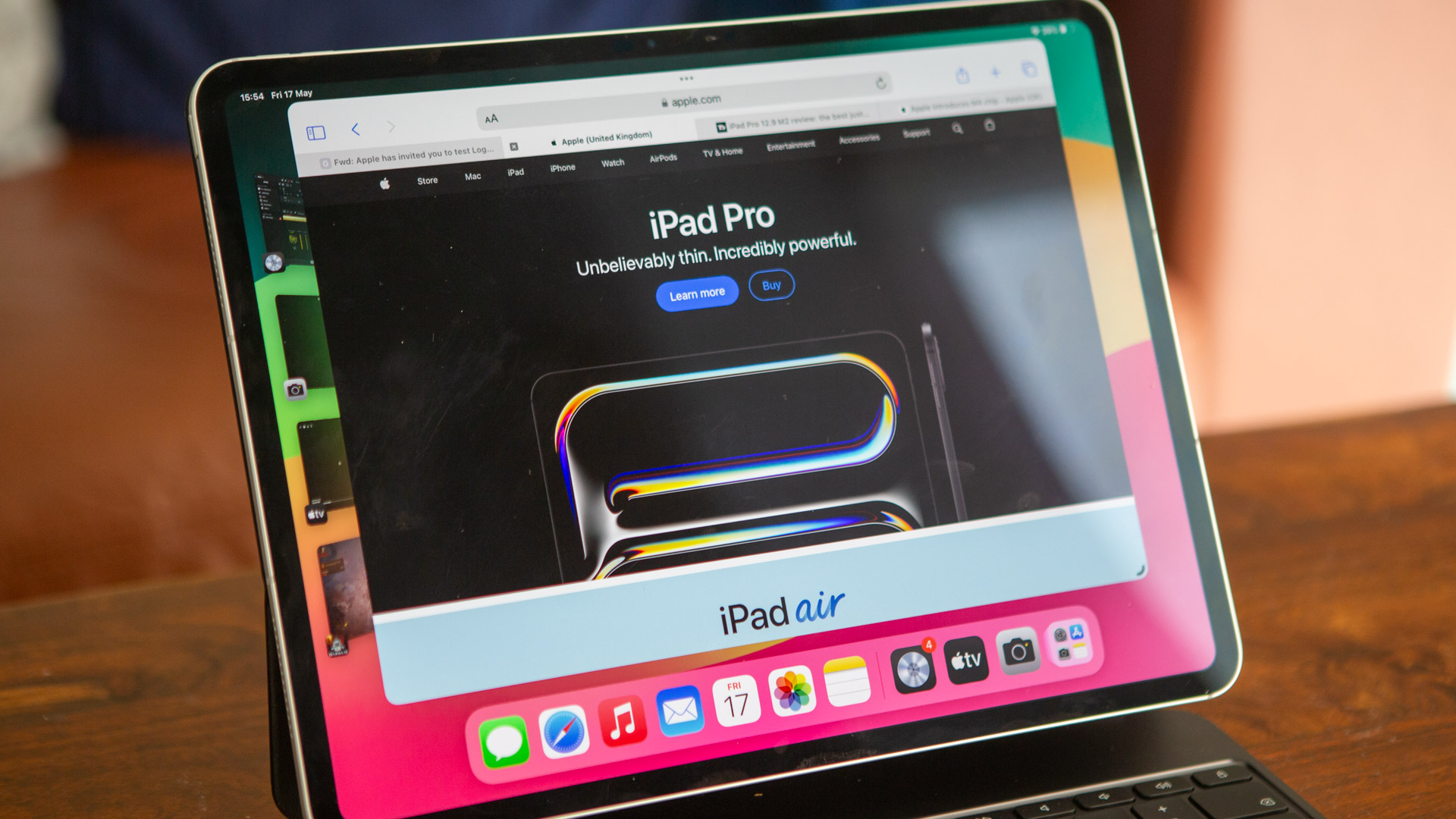
iPad Pro camera system
Despite changing position, the front camera on the iPad Pro appears to be identical to the previous model. This is a 12MP TrueDepth camera with an f/2.4 aperture and Centre Stage to track you during video calls. This will give 1080P video at 25, 30 and 60fps and there’s a Retina Flash too.
On the rear though, there’s now just a single camera. Gone is the 10MP Ultra Wide camera, leaving just the 12MP f/1.8 wide-angle camera, accompanied by a new adaptive True Tone flash. While this downgrading of the rear camera array might come as a bit of a surprise to some users, I think it actually makes sense. How many people truly use an iPad Pro to take pictures?
I imagine most rear cameras on these tablets remain completely unused. While it does still take a nice picture, the main use of the iPad’s camera is to scan documents. This is something the current 12MP wide-angle camera is more than capable of doing – and more effectively thanks to the adaptive flash. You can take 4K video on the rear camera too, including in Pro Res, should you need to use it in a multi-cam set-up.
The only reason I would have liked to see a twin camera set up on the iPad Pro would be for Vision Pro 3D video. Vision Pro owners are likely to also be iPad Pro users, so it would make sense to have them work closer together.
I would also have liked 4K video and, potentially, a higher pixel count from the front camera to allow for even better-quality FaceTime calls. After all, 2K and 4K webcams are becoming the norm for external webcams these days.
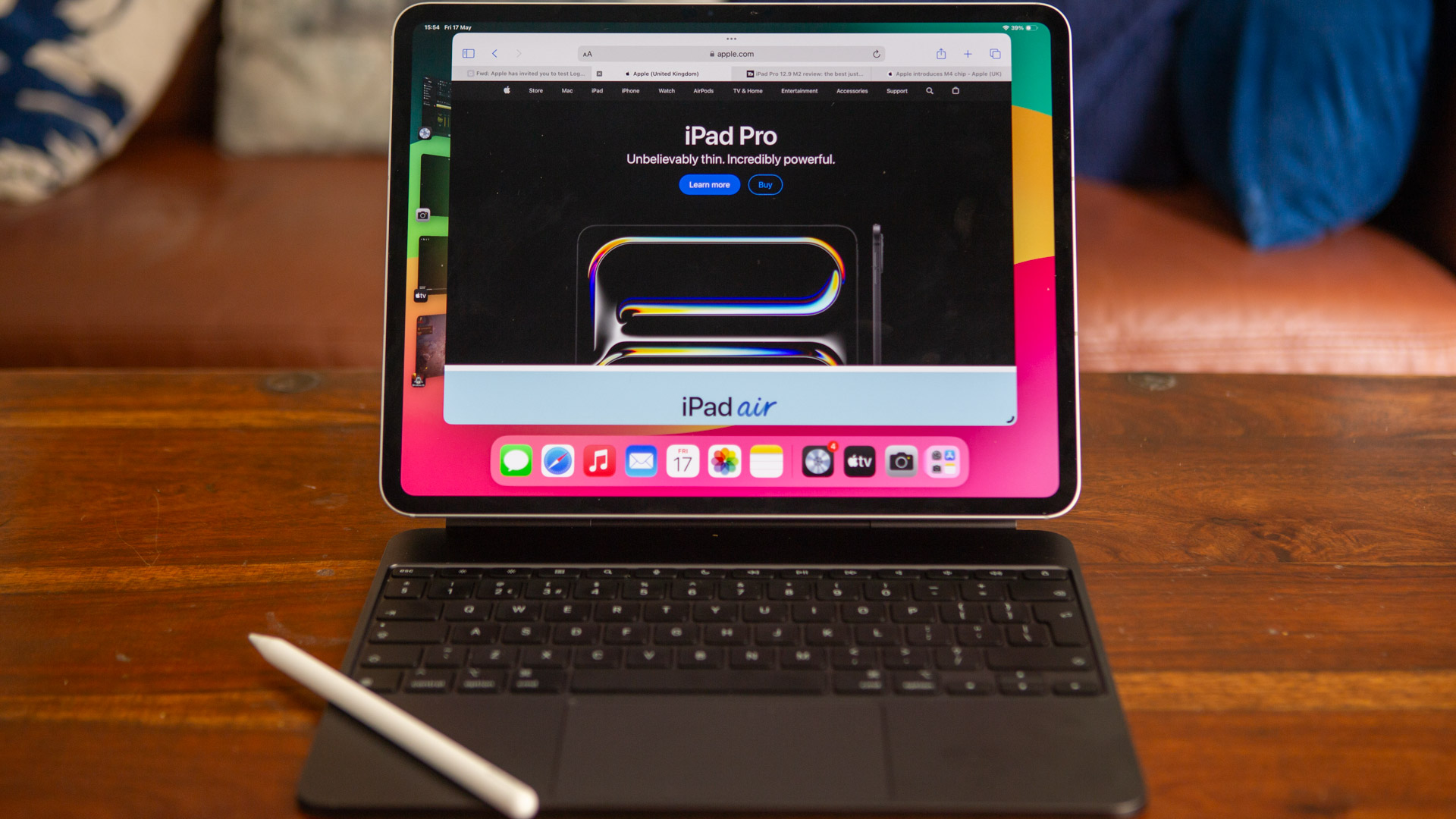
iPad Pro M4 performance
Apple Silicon progression has certainly picked up speed in recent years but it was quite unexpected when the iPad Pro was announced to feature a new M4 chip that hasn’t been used in any other Macs. I, (like many others) was expecting it to use the M3 chip, but the M4 has some distinct advantages over the still fairly recent M3.
Firstly, this second generation 3 nanometer chip offers a 10-core CPU (though note that the 256GB and 512GB models use a 9-core version). The unified memory (8GB in the 256/512GB, 16GB in the 1TB/2TB) is faster, running at 120GB/s. Then there’s the neural engine.
The neural engine is Apple’s AI capabilities, and it has had neural engines in its chips since the A11 that featured on the iPhone 8 in 2017. The next generation neural engine on the M4 chip though is its fastest to date. This is a 16-core design and is capable of up to 38 trillion operations per second.
To run that tandem OLED display, the M4 features a new display engine, while the 10-core graphics processor provides the rendering power for serious professional applications, as well as almost console-quality gaming.
The result is an unbelievably smooth and powerful machine. In real-world testing, it never seems to miss a beat, and handles the new version of the professional music software Logic Pro and Diablo Immortal game with ease.
For more accurate testing I ran Geekbench 6 on the iPad Pro. Its CPU Multi-core score of 14,577 puts it 50% higher than the last iPad Pro (M2) and around the same level as some MacBook Pro models with the M2 Pro chip. However, it’s worth noting that direct comparisons with MacBooks are difficult due to the different operating systems.
Battery life for the iPad Pro is quoted as up to 10 hours or 9 hours for cellular connections. While plenty for most users, it’s small in comparison to the MacBook Air’s 18 hours, and it still reduces charge significantly when in sleep mode.
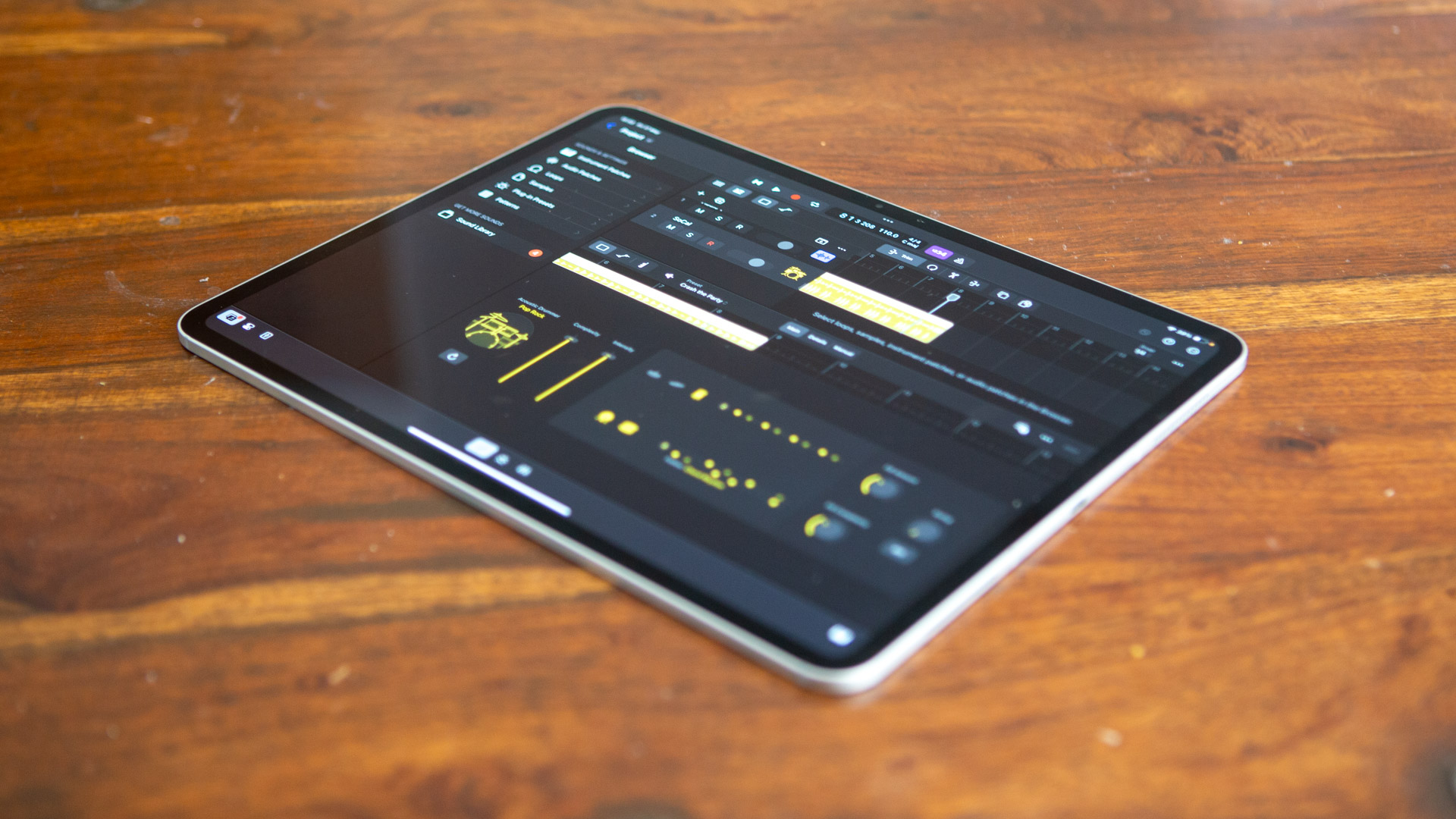
iPadOS
If you are considering swapping your MacBook for an iPad Pro, the biggest factor likely to put you off is the move from MacOS to iPadOS. The iPad Pro at the time of testing is running iPadOS 17.5.
As a general tablet operating system, the current iPad OS works really well. However, for those used to MacOS and wanting to use the iPad like a Mac, it can feel limiting. Apple introduced Stage Manager last year to the iPad, which gives the OS more of a Mac feel. You get the familiar taskbar at the bottom and minimised windows to the side. This is a step in the right direction but I’d love to see it go further.
With a 13-inch screen and an M4 chip, there’s no reason why it couldn’t support a version of MacOS or at least completely mirror the look of MacOS. I’d love to be able to resize the taskbar and have the minimised windows appear in the taskbar to start with. I’m hopeful that iPadOS 18 will expand the Stage Manager's abilities to do this, or maybe offer a dedicated version of iPadOS for the Air and Pro models to allow a more laptop-like experience for those who want it.
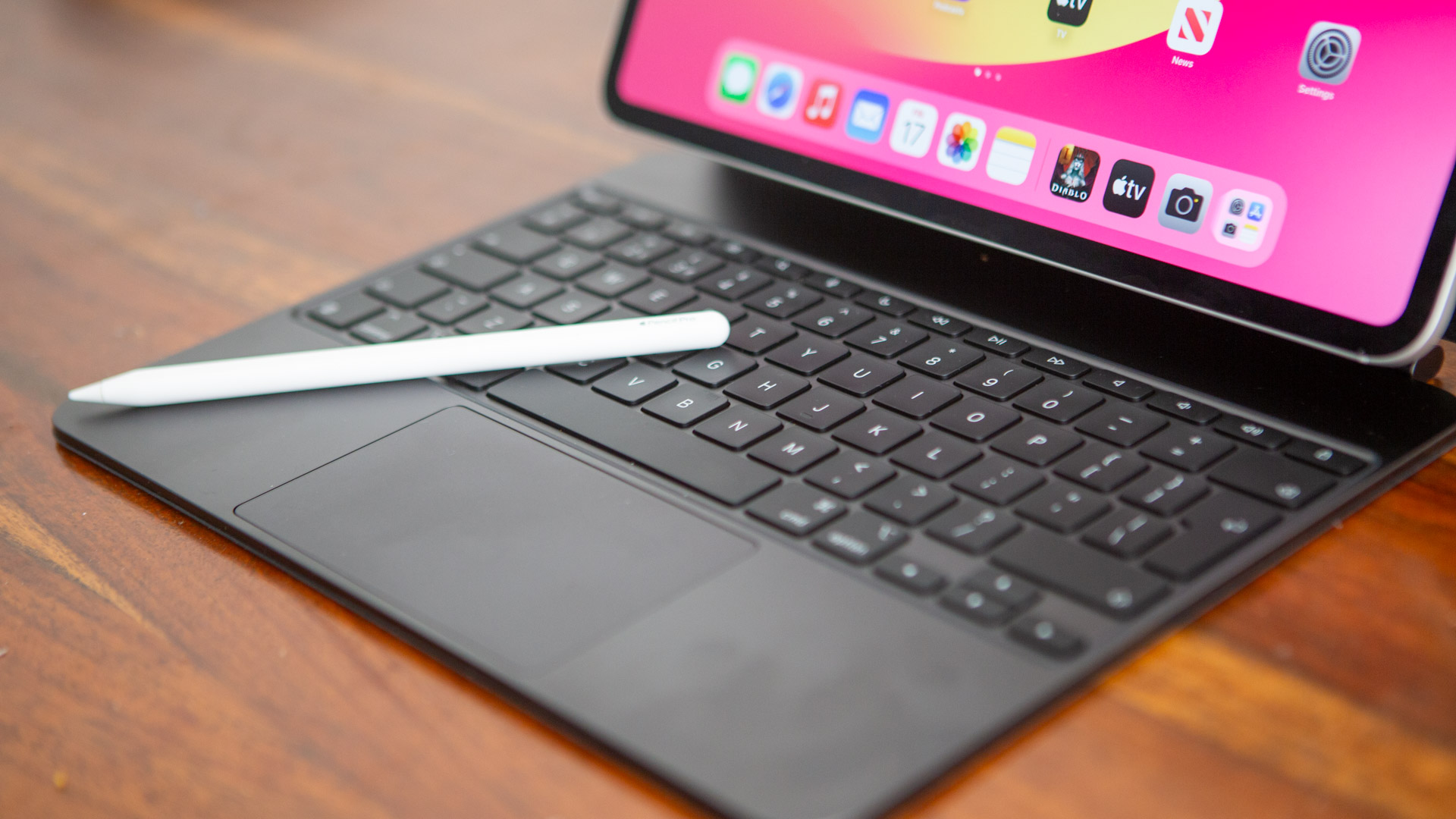
iPad Pro accessories
It would be remiss to talk about the iPad Pro without mentioning the accessories, as they help turn the iPad into something so much more. Firstly the new Magic Keyboard is a big leap forward from the old model.
It now has a dedicated row of function keys above the numbers, allowing you to control your volume, brightness and other functions (as you would on a Mac). The keyboard now feels like you are typing on a laptop keyboard and the trackpad is larger and has haptic feedback when you press it. The trackpad isn’t quite as big as the one on a MacBook but it’s considerably larger than before and very useable. I had to keep reminding myself, I could touch the screen.
The new Apple Pencil Pro is the perfect tool if you regularly draw or write on your iPad. The biggest new features on this model are a new pinch function on the barrel, which brings up a quick menu to change the brush style, and a gyroscope in the pencil so that when you rotate the pencil, it rotates the brush too. This is handy for shaped brushes and calligraphy, it can also be used in some editing.
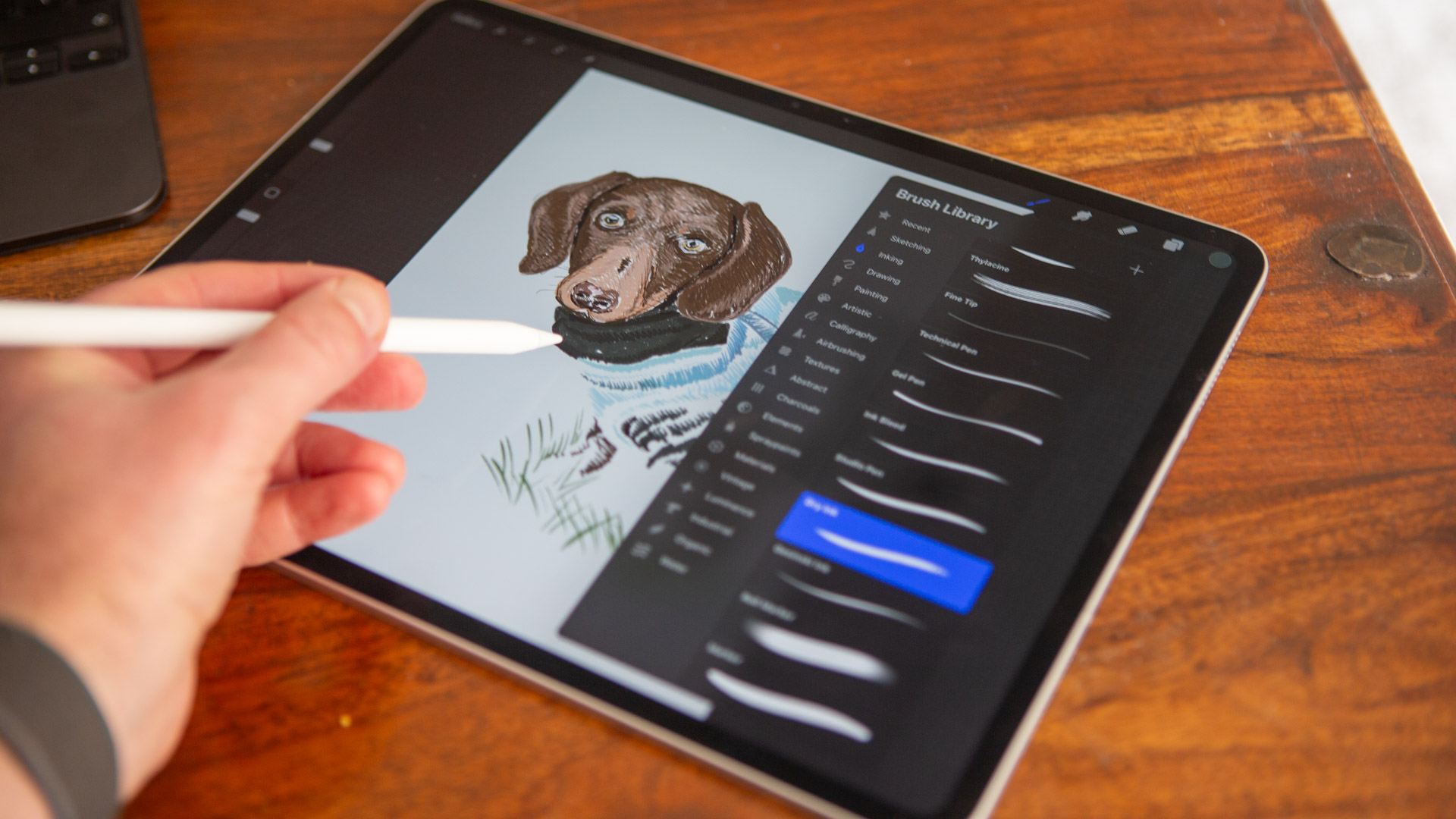
Should I buy an iPad Pro?
The iPad Pro is so much more than just a tablet. This powerful machine can take on professional tasks with ease, it can work as a portable edit suite or graphics tablet, and it can provide gorgeous visuals.
For the more casual user, the OLED display is incredible and means everything from movies and games, to photos and webpages, look simply stunning. While the screen is not a massive jump in quality from the previous iPad Pro, the extra brightness is noticeable.
While iPadOS isn’t perfect, I could definitely see this being a valid replacement for my MacBook Pro. If I was travelling light, the lighter and thinner design makes it easy to keep in my bag and with the Magic Keyboard, it’s just as easy to work on.
If you don’t need the power of the M4 chip, the new 13-inch iPad Air is also worth considering, though it still uses the old Magic Keyboard which isn’t quite as good. Ultimately, if you are searching for the best tablet on the market, the iPad Pro is that choice.
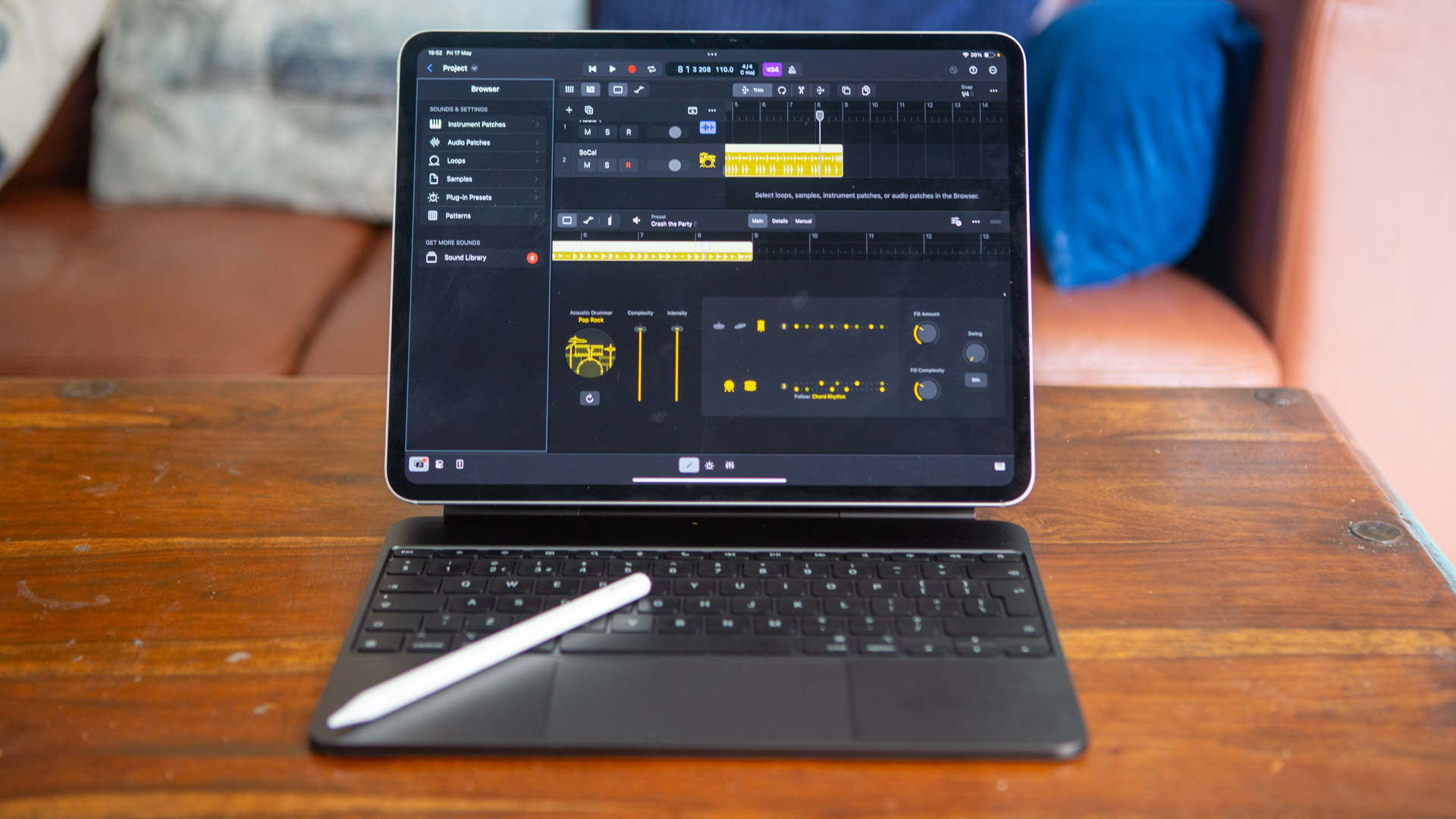
Sign up to the T3 newsletter for smarter living straight to your inbox
Get all the latest news, reviews, deals and buying guides on gorgeous tech, home and active products from the T3 experts
As T3's Editor-in-Chief, Mat Gallagher has his finger on the pulse for the latest advances in technology. He has written about technology since 2003 and after stints in Beijing, Hong Kong and Chicago is now based in the UK. He’s a true lover of gadgets, but especially anything that involves cameras, Apple, electric cars, musical instruments or travel.
-
 Polar’s new subscription feature lands in the shadow of Garmin’s Connect+ rollout
Polar’s new subscription feature lands in the shadow of Garmin’s Connect+ rolloutPR genius or timing disaster? Polar’s new Fitness Programme adds adaptive training to its ecosystem
By Matt Kollat Published
-
 New Orient Star watches offer a glimpse of the magic within
New Orient Star watches offer a glimpse of the magic withinThere are two new skeleton pieces
By Sam Cross Published
-
 Netflix's most surprising 100%-rated sci-fi series returns with gorgeous trailer
Netflix's most surprising 100%-rated sci-fi series returns with gorgeous trailerLove Death + Robots is back for more
By Max Freeman-Mills Published